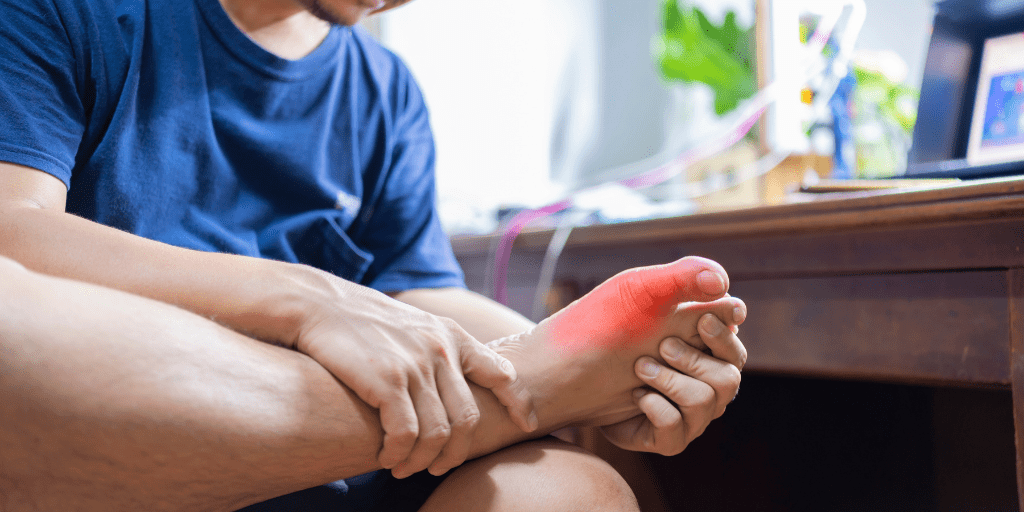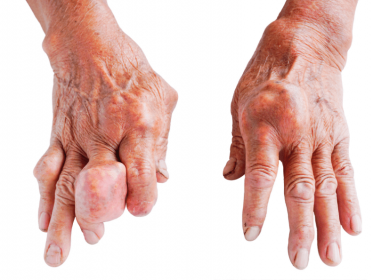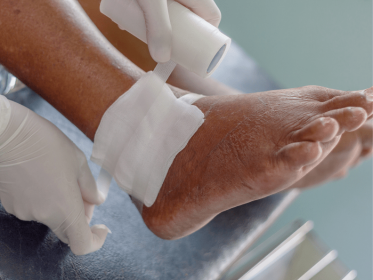- +1 888.407.0616
- info@mdchoicehospicecare.com
- Mon - Fri 9 AM - 5 PM

Gout is a disease that develops as a result of a malfunction in the body’s metabolism. Gout is thought to be more common in elderly men, however, it has lately been discovered in women after menopause in developed countries.
The prognosis for recovery is discouraging; even with prompt medical attention, a complete cure for the disease is not realistic. Medications combined with a diet, on the other hand, can avoid seizures, lower uric acid levels, reduce the amount and size of urates, and relieve inflammation in the affected joints.
As we get older, our metabolism slows down, our biochemical reaction rate slows down, and our water-salt balance shifts. Chronic diseases emerge in the context of stress and hormonal disturbances. Take, for instance, gout. The accumulation of uric acid salts in the form of crystals in the toes is a symptom of pathology. The following are the main causes of gout in the elderly: a history of hypertension, atherosclerosis, endocrine system diseases; excessive consumption of meat offal, coffee, and some types of alcohol; accelerated uric acid synthesis with simultaneous violation of its excretion by the kidneys; obesity, and so on.

Men suffer more often than women, more than 2% of people over the age of 60 are diagnosed with gout. The appearance of pathology in elderly women is associated with a decrease in the formation of estrogens against the background of a slowdown in overall metabolism. A special risk group consists of elderly people suffering from inflammatory and degenerative joint diseases – arthritis, osteoarthritis, osteochondrosis.
The disease progresses through numerous phases as it develops. The changes aren’t evident at first, but a minor increase in uric acid and its metabolic products can be detected in the lab.
Inflammation and minor pain may cause discomfort in the patient, which can be alleviated with analgesics and anti-inflammatory medicines. In the second stage, salt deposits form in the toe joints, resulting in the formation of sharp crystals. The pain becomes more noticeable, and there are increasing concerns, particularly while wearing tight shoes.
The signs and symptoms are similar to those of arthritis. Chronic inflammatory responses and fever characterize the third stage. Chronic diseases of the urinary and endocrine systems, as well as kidney abnormalities, are possible. The patient is constantly in severe agony, and medications have little effect.

Chemical examination of synovial fluid obtained by puncture from the afflicted joints is used to determine the exact diagnosis. The survey approach identifies the presence of gouty attacks, which are rapid attacks of acute pain that gradually reduce without the need for medication. X-ray testing can also confirm the presence of fuses. A urine test to determine the concentration of uric acid salts is sometimes requested, however, this analysis is not unique to gout.
Anti-inflammatory medicines are used as part of the treatment to keep the kidneys in good working order. It’s possible that the patient will be advised to wear orthopedic shoes. Furthermore, it is critical to maintain a healthy diet, eliminate bad habits, and avoid the appearance of extra body weight.